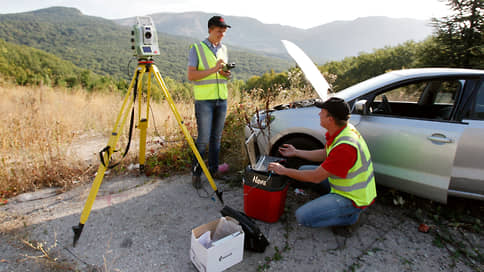The government will unify the rules for calculating the lease of government plots
[ad_1]

The government is clarifying the method for determining the rental price of state-owned land plots – now it will be calculated only on the basis of cadastral value. So far, pricing in this area is not entirely transparent – rental rates are also determined on the basis of the market value of the site or by decisions of the regions. This approach has been repeatedly recognized as ineffective, but the transition to a unified methodology was complicated by the lack of correct and complete data on land and its cadastral value. Now, after cadastral assessments have been carried out throughout the country, the regions are ready for innovations, but the risks of errors in calculations remain, lawyers say.
The government has submitted to the State Duma draft amendments to the Land Code and the Law “On State Cadastral Valuation”, designed to unify the determination of rental rates for state and municipal plots. As Prime Minister Mikhail Mishustin said at a government meeting on Tuesday, now to determine the amount of rental payments, in addition to the cadastral value, market valuation is also used – “rates that are set, including locally.” The lack of a unified methodology, as indicated in the explanatory note to the project, leads to legal uncertainty, difficulties in calculating rent and inefficient use of state property.
The bill proposes to determine the amount of payment for state land based on the cadastral value. An exception is the rental of plots based on the results of auctions, in which case the cost is determined at auction. The transition to the new model will take place no earlier than January 2026 – until then the government, regions and municipalities must make changes to regulations.
Rosreestr notes that “the bill does not change the current legal approach—it does not establish specific interest rates, coefficients, and so on—to determine the amount of rent for land plots provided without bidding.” “The project only establishes a unified basis for determining fees in the form of cadastral value for all levels of public property. This approach in itself does not affect the revenues of regional budgets,” the department explains, noting that it can contribute to stability and predictability in land relations. Rosreestr reminds that this solution already works for plots of federal property. “It made it possible to reduce federal budget expenses for conducting market assessments of leases, as well as speed up the involvement of land plots in circulation,” the service adds.
Managing partner of Land Law Firm Denis Litvinov explains that in 2009 the government established two procedures for calculating rent for state land: for federal lands based on cadastral value (with correction factors, the same procedure for plots in Moscow), for the rest they introduced principles for determining rent (economic feasibility, maximum permissible simplicity of calculations). “This procedure is less transparent than for the federal states and has caused quite a lot of controversy,” he notes.
It should be noted that the transition to cadastral value when calculating rent in the regions was complicated by the lack of complete and correct data on land and its value. For a long time, regions made decisions on recalculating cadastral values on their own, and the data may not have been updated for years, but in 2022, the unified cycle of state cadastral valuation (GKO) ended, the next round of valuation will be in 2026. In addition, to improve the quality of work, Rosreestr proposed transferring authority to carry out all complex cadastral work in the regions to the state company Roskadastr (see Kommersant on August 9 and 25).
According to lawyers, the regions, after a single cycle of state bonds, are ready to use a new approach. Forward Legal lawyer Ilya Ryzhakov believes that unification can provide an understandable and transparent mechanism for calculating rent, but it has drawbacks. “Given the significant differences in the cost of approximately similar plots in different regions of the Russian Federation, potential tenants will face the fact that rents will increase. Now regions are introducing adjustment coefficients that regulate the amount of rent according to various criteria,” he explains.
Managing partner of the RI-Consulting law firm, Elena Gladysheva, citing practice, says that the cadastral value of plots can change unpredictably, so the number of court cases challenging its value may increase from the date the amendments enter into force. At the same time, says BGP Litigation advisor Ruslan Petruchak, a unified calculation methodology will make it possible to combat “abuses and double standards when interests are initially lobbied for a specific tenant.” According to Denis Litvinov, cadastral valuation is now more fair (compared to what it was ten years ago) – the risks of errors and disputes remain, but for now the legislator assumes the possibility of challenging the cadastral value.
[ad_2]
Source link






